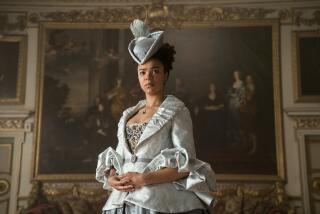Decorating Trend : It Seems There Will Always Be an English Style
- Share via
NEW YORK — With Americans listing toward tradition in all things, it’s no wonder that English style keeps broadening its constituency in this country. New York’s traditional designers revel in it, and though their clients have already been given hefty doses of chintz-covered furniture, canopied beds and tasseled draperies, evidently nobody has had nearly enough.
The Royal Oak Foundation Designer Show House, which opened recently in a townhouse here, celebrated this feat of stylistic endurance. Decorators from both sides of the Atlantic who specialize in the casually elegant look of the English country house or city apartment filled five floors of rooms with nothing but English style.
English decorators who created the opulent rooms included Georgina Fairholme and Emily Todhunter (who live in New York), Nina Campbell, Jane Churchill, Helen Cooper, Christopher Hodsoll and Mimi Russell, Christopher Neville and the London-based design company, Laura Ashley.
The Americans included Arnold Copper, Robert Metzger, Dennis Rolland, David Salomon, Barbara Southerland and Harriette Levine.
Though a common thread ran through both sets of designers’ rooms--rich comfort melded with traditional elegance--the show house revealed a curious transatlantic split in interpretation.
According to New York decorator Barbara Southerland, who created a fantasy nursery for Princess Beatrice, English decorators showed more restraint and used less color, whereas many of the American decorators cluttered their rooms with furnishings and patterns, and glazed the walls in dramatic tones.
Attention to Detail
The English decorators “showed a very interesting attention to details,” Southerland said. “In some ways, their rooms were less studied than ours, and less dramatic.”
Southerland, whose specialty is traditional rooms with eccentric touches, said her room was not designed to nurture English restraint, but to create a whimsical, charming setting for a royal baby. Her aesthetic inspiration came from the Duke and Duchess of York’s--or Andrew and Fergie’s--penchant for aviation. She called the nursery “a fantasy of flight.”
The centerpiece of the room was a 6-foot-high carved crib shaped like a swan, with drapery hanging from a coronet in its beak. The ceiling was painted with clouds, birds and flying cherubs. Festooned with paper bees, teddy bears and Beatrix Potter drawings, the room also harbored a few down-to-earth touches, such as a comfortable armchair for nanny and baby and a durable needlework carpet.
The English decorator Nina Campbell, recently appointed decorator to the Duke and Duchess of York, employed a more rigorous, late 18th-Century aesthetic that better typifies true English style. Though her top-floor sitting room was quite comfortable, furnishings were quiet, and chairs were covered in an acorn weave. Dark blue walls gave the lair a subdued feeling, and interesting but humble works of art lent a personal touch.
Foundation Event
This was the first show house sponsored by the Royal Oak Foundation, an American charity that raises funds for the National Trust of England, Wales and Northern Ireland. Members said they hoped it would become an annual event. The foundation’s benefit chairwoman is Linda Mortimer, and some proceeds from the show house will help restore her ancestral home, Kedleston Hall, the Robert Adam masterpiece acquired this year by the National Trust.
The wealth of variations on Engsh style in the show house included a romantic sanctuary by Helen Cooper, furnished with a Victorian chaise, a wistful set of antique objects littering the floor and a spirited drape, hung glamorously and simply. Cooper designed the room for an imaginary woman, permitting her a place where she might go “to dream and conspire quixotically and to write, paint, play music and cry. . . .”
There’s also a kitchen by Smallbone, the alliance of designers Keith Day and Hugh Owens, which combined the ease and convenience of the 21st Century with the warmth and fine craftsmanship of the 18th. Key furniture elements included a plate rack, stenciled panels and classic cabinetry hand-rubbed or built up with color, layer by layer, to achieve the powdery finish naturally acquired with time.


